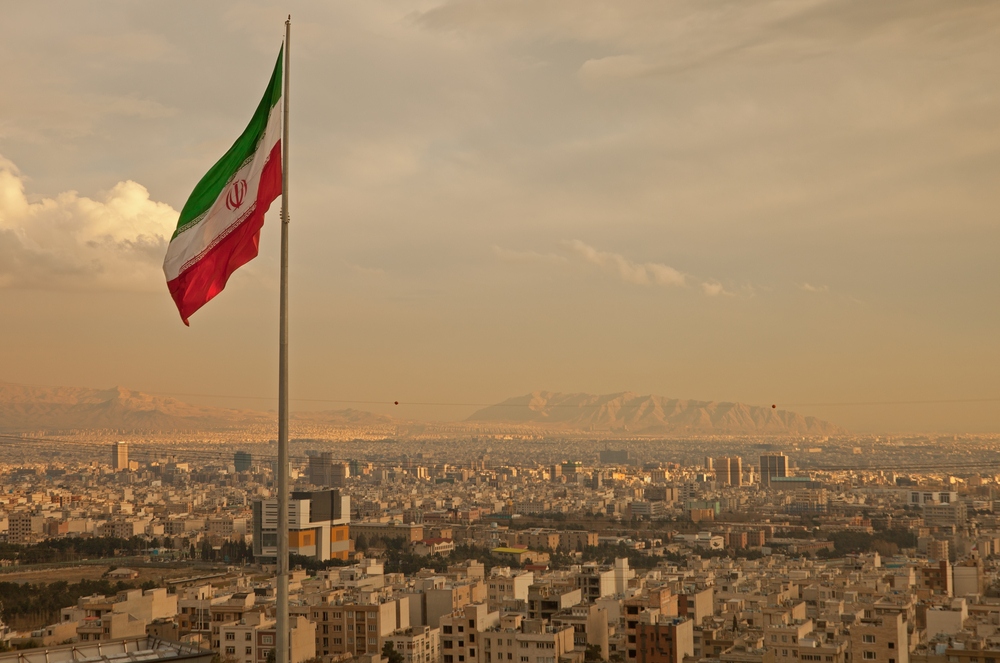How IRGC Manages Iran’s Strategic Missiles
The Islamic Revolutionary Guards Corps (IRGC) is crucial to Iran’s conventional and WMD deterrence, as well as achieving foreign policy objectives. It bases its defence strategy on missile capability and missile deterrence.
It is noteworthy to mention that Iran’s security was a responsibility of the Artesh and the Islamic Revolutionary Guards Corps (IRGC). However, the Islamic revolutionary government’s suspicion of the capabilities of the Artesh resulted in the transfer of responsibility of maintaining and managing strategic systems to IRGC.
As the capabilities of Artesh remained doubtful, the IRGC is reported to field its own army, navy and air-force and forms the main military force in Iran. Even though the Artesh comprises of Iran’s regular navy, ground forces and air-force, it is the IRGC which is responsible for strategic weapon systems.
This is not only because the IRGC still views the capabilities of Artesh with suspicion but it was also weary of Artesh’s loyalty to the Shah and this suspicion also resonates with the views of the Iranian regime. Thus, the Artesh is only given the responsibility of defending the borders while the major “power-broker” regarding the Iranian nuclear weapons and missile systems is the IRCG.
However, the Artesh does have control over Iranian short range missiles and rockets and test fires these rocket systems occasionally.
Despite the international pressures like the United Nations Security Council Resolution (UNSC) on Iran to refrain from developing ballistic missiles, Tehran continued to make progress in its missile development program. As ballistic and cruise missile capabilities improvised for Iran, IRGC’s deterrent capabilities strengthened. Despite sanctions, Iran under IRGC’s dominance continued to deter the United States and its allies in the Persian Gulf region. Some of its long range missiles like the Sejjil could also put targets in Eastern Europe like Poland and Latvia.
It has been reported that in the Ukrainian War, Russia is using Iranian drones. This has raised concerns in the West.
As is a known fact, revisionist states continue to strengthen their deterrence and combat capability as a medium for mediation and negotiations and to pursue independent foreign policy goals. Iran in future, could provide long range surface-to-surface ballistic missiles to Russia too, as in the past the Intermediate Range Nuclear Forces (INF) Treaty did not allow Russia to develop medium and intermediate range missiles.
In recent times in February 2023, Iran under IRGC developed a cruise missile with a range of 1650kms. In addition to this, Iran has also focused on hypersonic missile capabilities which would be under the IRGC. In 2023, Iran unveiled and tested the 1400kms Fattah hypersonic missile that could evade enemy missile defence shield.
In fact, this missile has been developed by IRGC Aerospace Force. The IRGC Aerospace Force is in charge of Iran’s surface-to-surface missiles.
In the future, Iran is hoping to possess hypersonic glide vehicles (HGVs) that could be mounted atop ballistic missiles similar to the technology being developed by the United States, Russia and China. Considering that Russian and Chinese HGV technologies are nuclear capable, Iran would then wish to pursue nuclear capable HGVs that could evade enemy missile defence systems.
That IRGC is the main force maintaining strategic missiles gives them strategic advantages vis-à-vis its adversaries. Advance missile capabilities enable IRGC to negate its combat disadvantages due to a weak air power capability. Even though Iran claims its missile prowess is for strengthening its conventional deterrence, IRGC does threaten to produce nuclear weapons should Iran feel threatened.
The IRGC is not just the institution for development and testing of missile capabilities, but they are also the medium of signaling to enemies for strengthen deterrence. Missile signaling is integral to missile deterrence.
In 2023, the IRGC Aerospace Commander, Brigadier General Amir Ali Hajizadeh added to strengthen Iran’s missile deterrence that the American military bases in the Middle East are “meat between [Iran’s] teeth and that the US Navy forces in the Indian Ocean, the Red Sea, and the Mediterranean are worthless because they are within the 2000+kilometer range of Iran’s missiles. Again, retaliating to enemy’s strikes, Qiyamah or Judgement Day, as IRGC officials call it, mentions missiles as a weapon to be used for such a strategy.
The organization also stands as an integral part of achieving Iran’s foreign policy goals among which supporting proxy groups in neighboring countries is noteworthy.
Through IRGC’s missile diplomacy, proxy groups like Hezbollah and Houthis receive missile systems from Iran that use on their adversaries.
In fact, IRGC helps Hezbollah build missile facilities in Lebanon. Not only do their receive ballistic missiles but also anti-ship cruise missiles making adversaries’ naval assets target of asymmetric groups. The IRGC not just provided missile systems to Houthis but, they also helped them to upgrade existing Soviet era missile system left in Yemen.
Missiles will continue to remain integral to IRGC’s foreign policy objectives as well for strengthening deterrence. This is achieved through the “integrated missile network” of Iran and its allies in which IRGC is the main backbone. Should Iran ever choose to develop nuclear weapons, IRGC would need to cope with the pressure handling missile systems that could to nuclear capable especially, the ones that are proliferated.
Featured photo, credit: Shutterstock

